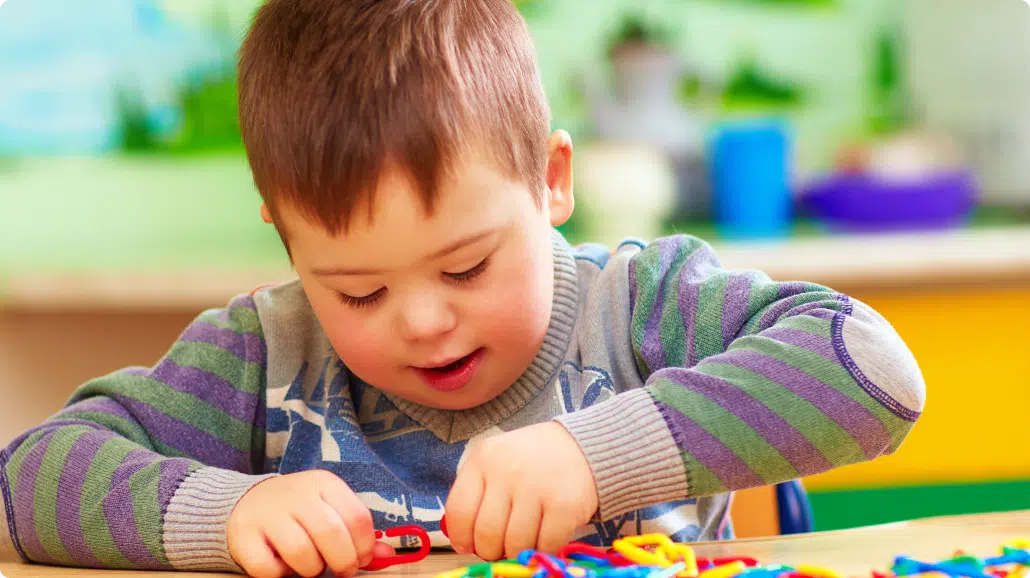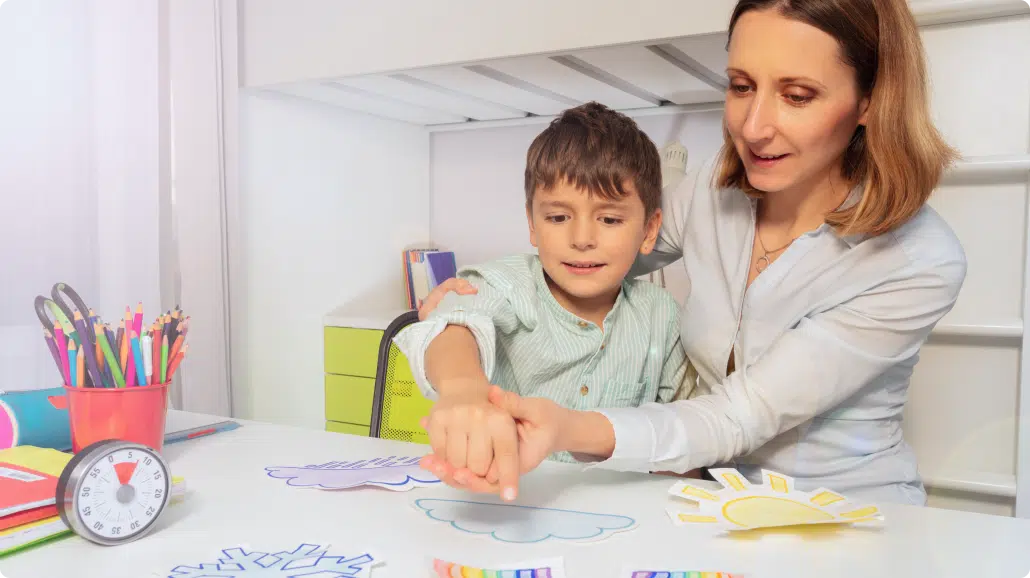Do you notice anyone around you who participates in repetitive, self-soothing behaviors regularly?
Perhaps you know a coworker or classmate who repeatedly clicks the button of their pen or you know a teenager who plays with their hair while telling a story. Maybe you have a friend who loves to hum their favorite song while they’re planning their next move in your competitive chess game.
These aforementioned actions are examples of self-stimulatory behaviors, commonly known as “stimming.”
What is Stimming?
Stimming behaviors are defined by “repetitive motor movements, use of objects, or speech” according to the DSM-5.1 Although stimming behaviors are most often associated with autism, it is important to recognize both neurotypical stimming and neurodivergent stimming.1 It is more common for neurotypical stimming behaviors to be less repetitive and more controllable than neurodivergent or autistic stimming behaviors. For example, a neurotypical individual could potentially control whether or not to crack their knuckles during an important meeting. On the other hand, autistic stimming behaviors occur more repetitively and individuals with autism might have little to no control over their stims.2 An individual with autism might not be able to resist moving in a rocking motion if they are overstimulated by loud music.
Stimming behaviors should not be concerning unless they greatly interfere with an individual’s learning experience or cause physical injury. In this case, it is common to work toward reducing or finding a functional replacement for the behavior. Many neurodivergent individuals stim without major consequences. For example, a child with autism might clench their fists when their teacher shares a funny joke with the class, which does not cause them self-injury or directly impact their learning.
Why Do Individuals Stim?
While stimming behaviors might seem to be disruptive or destructive, they actually serve a purpose for the individual who participates in them. Some common examples of stimming behaviors among neurodivergent children include: body rocking, hand flapping, finger snapping, twirling, pacing, repeating words or phrases, or repeatedly fiddling with a particular object.3
While there are a variety of purposes that stimming actions serve, oftentimes those reasons might not be clear to others. Stimming can help reduce anxiety and provide a feeling of calmness to an individual. It also serves to cope with sensory overload, stimulate their senses, relieve physical discomfort, or express frustration or excitement.3
What Would be Considered Dangerous Stimming?
It is important to recognize the difference between self-harm and self-injurious behaviors. Harm is not the intent for most neurodivergent individuals who stim. Self-injurious stimming usually takes place as an attempt to regulate discomfort, physical pain, or communicate a specific need.4
In some instances, stimming behaviors may cause self-injury, such as excessive scratching of one’s skin, head banging onto hard surfaces, pressing on eyes, or severe hand-biting.3,5 These self-injurious behaviors could potentially lead to infections or require serious medical or surgical treatment.1 If an individual participates in these types of self-injurious stimming behaviors, it would be necessary to consider a stim reduction or functional replacement intervention.
Strategies to Mitigate Disruptive or Self-injurious Stimming Behaviors
1. Consult with a Medical Professional
A great first step when contemplating how to reduce stimming behaviors would be to seek advice from a medical professional. It’s possible that an individual’s stimming behavior might be due to an underlying health condition, unrelated to autism.1 This would eliminate the possibility of a physical cause for stims such as retinal detachment, ear infections, or migraines which might cause self-injurious stimming (e.g. head banging or pushing on eyes).1,6 A medical professional will be able to determine any physical causes and provide medical advice before incorporating behavioral intervention.
2. Applied Behavior Analysis (ABA)
ABA is an evidence-based practice with a primary focus on understanding an individual’s behavior to make meaningful, social, and positive behavior changes. ABA therapy is a highly effective systemic intervention strategy that increases adaptive behaviors while decreasing problem behaviors.7 One-on-one ABA therapy with a Board Certified Behavior Analyst (BCBA) has proven to be a beneficial strategy to support neurodivergent individuals make actionable progress toward behavior goals.6
During a session, a BCBA can work with an individual to reduce or incorporate a functional replacement for a disruptive or self-injurious stimming behavior. Finding a personalized replacement that serves the same function of behavior is an effective strategy to support an individual. For example, a BCBA can teach an autistic child how to squeeze a stress ball instead of repetitively scratching their skin. This alternate functional behavior can meet the child’s needs by replacing the self-injurious stim with another fine motor activity.
3. Increase Physical Activity
Evidence has shown that an increase in physical activity or exercise can support an individual to decrease self-stimulatory behaviors and rather increase functional replacement behaviors. Certain types of physical activity benefit neurodivergent individuals by helping them refocus and having fun!6 Enjoyable activities could include dancing, jumping on a trampoline, learning how to juggle a soccer ball, dog-walking, bicycle riding, or finding a free on demand exercise class online!
Sources:
- Kareng Wang. Autism and Stimming – Child Mind Institute. Accessed April 20, 2023. https://childmind.org/article/autism-and-stimming/
- Totsguide | Difference between ordinary and autistic stimming. Accessed April 20, 2023. https://www.totsguide.com/single/blog/Difference-between-ordinary-and-autistic-stimming/zwQ1
- American Psychiatric Association. Understanding Stimming: Repetitive Behaviors with a Purpose. Published December 7, 2020. Accessed April 20, 2023. https://www.psychiatry.org:443/news-room/apa-blogs/understand-stimming-repetitive-behaviors-purpose
- National Autistic Society. Self-harm. Accessed April 20, 2023. https://www.autism.org.uk/advice-and-guidance/topics/mental-health/self-harm
- Stimming: autistic children and teeenagers. Raising Children Network. Published August 25, 2022. Accessed April 20, 2023. https://raisingchildren.net.au/autism/behaviour/common-concerns/stimming-asd
- How to manage stimming. ABA Psychological Services, P.C. Published April 25, 2022. Accessed April 20, 2023. https://abapsychologicalservices.com/blog/How-To-Manage-Stimming.html
- ABA Psychological Services, P.C. Accessed April 20, 2023. https://abapsychologicalservices.com/





